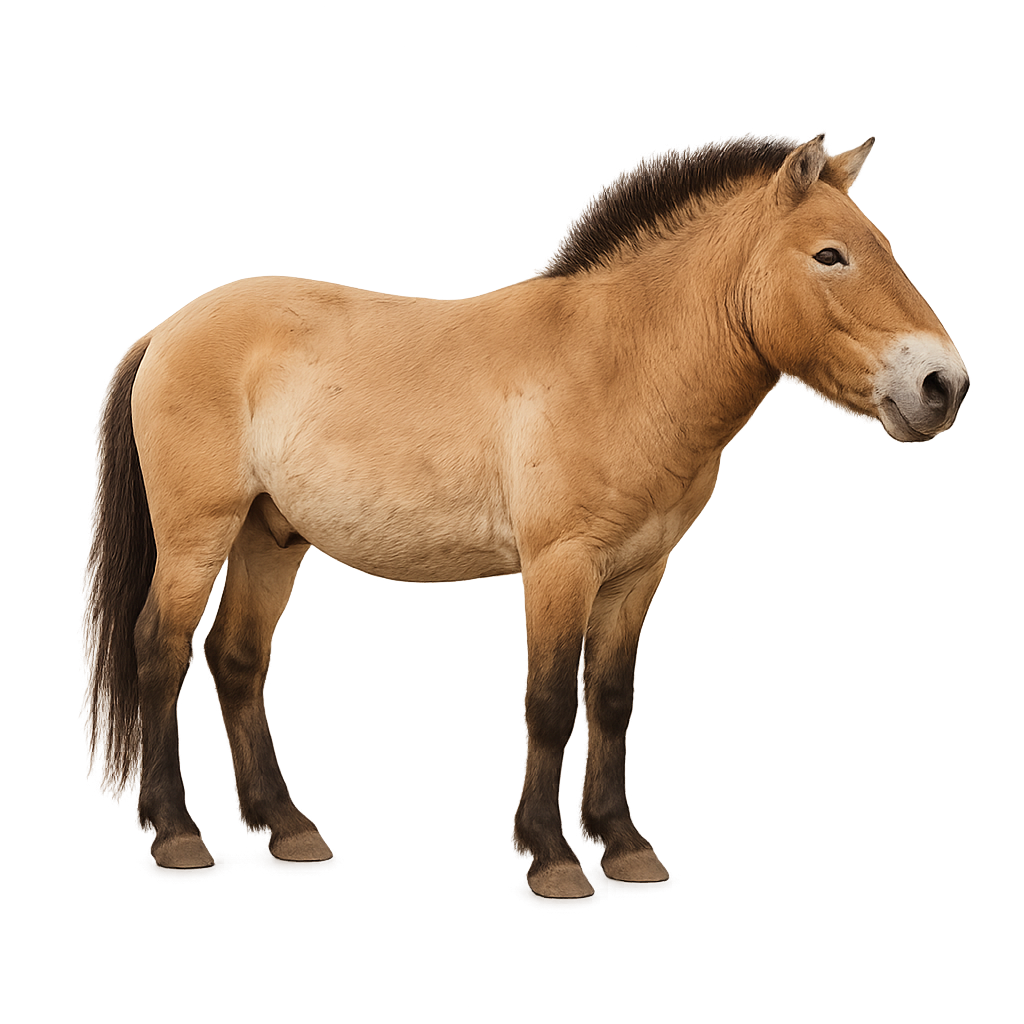Your wildlife photography guide.
Explore in detail, study its behavior, prepare your shots.
Where to observe and photograph in the wild
Learn where and when to spot in the wild, how to identify the species based on distinctive features, and what natural environments it inhabits. The WildlifePhotographer app offers tailored photography tips that reflect ’s behavior, helping you capture better wildlife images. Explore the full species profile for key information including description, habitat, active periods, and approach techniques.
Przewalski's horse
Scientific name: Equus przewalskii

IUCN Status: Vulnerable
Family: EGUINIDAE
Group: Mammals
Sensitivity to human approach: Suspicious
Minimum approach distance: 50 m
Rut period: January to December
Gestation: 300 à 350 jours
Births: December to January
Habitat:
Steppes, grasslands, and open areas
Activity period :
Primarily active during the day, with peak activity in the morning and late afternoon.
Identification and description:
Przewalski's horse is a rare and hardy species of wild horse native to the steppes of Central Asia. It is the last true wild horse species still in existence, descended from ancestors that survived the Ice Age. This horse is characterized by its small size, tawny coat, and erect mane. Although it disappeared from the wild, it has been successfully reintroduced to its native habitats. Threatened by habitat loss and hunting, it is currently considered a vulnerable species.
Recommended lens:
>=400 mm – adjust based on distance, desired framing (portrait or habitat), and approach conditions.
Photography tips:
Photograph the Przewalski's horse using a telephoto lens to capture its majestic silhouette in the vast steppe. The best times to photograph are early in the morning or late in the afternoon when the light is soft and the horses are active. Be discreet and respectful of their space, as these wild horses remain sensitive to human approach.
The WildlifePhotographer App is coming soon!
Be the first to explore the best nature spots, track rutting seasons, log your observations, and observe more wildlife.
Already 1 431 wildlife lovers subscribed worldwide

